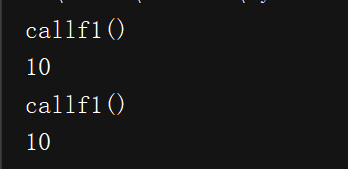python 中 裝飾器
阿新 • • 發佈:2018-12-17
裝飾器
裝飾器的本質:一個閉包函式
裝飾器的功能:在不修改原函式及其呼叫方式的情況下對原函式功能進行擴充套件
修飾器詳解請看:點選連結
(1)程式碼:外部的 f1 函式函式被徹底隱藏
程式碼:
def f1(x): return x*2 def new_fn(f): #裝飾器函式 def ff(x): print("call" + f.__name__ + "()") return f(x) return ff g = new_fn(f1) print(g(5)) f1 = new_fn(f1) print(f1(5)) #外部的 f1 函式函式被徹底隱藏
結果:

(2)有必加值時
程式碼:
import time from functools import reduce def performance(tt): # 當有必加的數值 或 字串時 可以這樣寫 如必加字元 DEBUG def d_performance(f): # 裝飾器函式 def fa(*args, **kw): #接受多個引數,但知道幾個引數時,可以不用最上面那個函式, star = time.time() #裝飾器本身不就是更改新增 python一些內建函式的模組中的函式中的一些功能嗎 l = f(*args,**kw) end = time.time() print("[%s]call %s() in %f s" % (tt,f.__name__,(end-star))) return l return fa return d_performance @performance('DEBUG') def factorial(n): return reduce(lambda x,y: x*y, range(1, n+1)) print (factorial(10))
(3)若裝飾之後,不該不變原函式的屬性、
請看程式碼:
import time,functools from functools import reduce def performance(tt): def d_performance(f): @functools.wraps(f) # 這一步為了不改變裝飾過的factorial函式的屬性,若不加上一步,你在下面輸出 def fa(*args, **kw): #factorial.__name__的屬性那麼是 fa,若加上這一步,那麼輸出的是factorial,大家可以動手試一下 star = time.time() l = f(*args,**kw) end = time.time() print("[%s]call %s() in %f s" % (tt,f.__name__,(end-star))) return l return fa return d_performance @performance('@decorator') def factorial(n): return reduce(lambda x,y: x*y, range(1, n+1)) print (factorial(10)) print(factorial.__name__)
